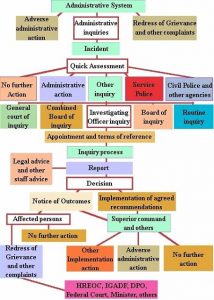
Administrative system of Madhya Pradesh
The Administration at the State level is the cutting edge of the public administration system in the country. Be it the issue of ration or electoral identity cards, procurement of foodgrains, implementation of employment guarantee schemes, supply of drinking water, mutation of land records, functioning of primary schools and healthcare centres or control of epidemics in the countryside, it is the instrumentalities of the State and District administration with which citizens have to interact.
The administrative structure of Executive Government is “the framework within which the permanent civil service operates under the supervision, control and direction of the political executive coordinating the different parts of the machinery and interacting with other Government agencies and the world outside Government” (UNDP – Civil Service Reforms). Machinery changes are often brought in based on an expectation that better structures will produce better results. Adhoc structural reforms in some countries till the early 1990s had relied more on “legislative changes superimposed on outdated organizational structure rather than based on an in-depth analysis of structural problems themselves”. Now there is a holistic approach to such reform through functional reviews which seeks to balance “a focus on internal reform with a concern for changing relations between public administration and society” (UNDP Public Administration Reforms) with primary functions of redefining roles, missions and functions of different layers of administration, identifying redundancy and duplication of functions, new functions and the 
State secretariat
Like the Central Secretariat, there is a state secretariat at the top level. It is the nerve center of state administration. It consists of several ministries and departments of state government. The Ministries, departments are headed politically by the ministers and administratively by the secretaries. The chief secretary is the head of the entire state secretariat, while, a secretary is head of one or two departments. He is usually a senior IAS officer. Here, it should be noted that the secretary is a secretary to the state government as a whole and not to the individual minister concern.
The State Secretariat performs mainly the following functions:
- To assist the Minister in the fulfilment of his task.
- To formulate the policies and programmes of the state government.
- To coordinate amongst the programmes of the state government.
- To prepare the state budget.
- To frame legislation, rules and regulations.
- To review the results of the execution of the policy.
District administration
District has been the basic unit of administration in Madhya Pradesh In India, we have a democratic welfare state which involves wide scope of activities for the development of the people and the nation as a whole. District administration, is that part of public administration which functions in the territorial limits of the district. According to S.S. Khera, “District administration is the total functioning of government”. It continues to be the hub of M.P. administration. With the introduction of planning and development functions the role of district administration has increased tremendously to build the country from below.
Administration Below District Level
For administrative purposes the district is divided into subdivisions, Tehsils, Parganas or Circle or Ferka and the village is at the lowest level. The sub division is headed by SDO – SDM/ Assistant Collector. He performs revenue as well as law and order functions in his sub divisions. He is a link between the district collector and the tehsildar in revenue matters and DM and the Station Police Officers in law and order matters. Tehsil is the basic unit for purposes of general administration, treasury, land revenue, land records, etc. Tehsil comprises of about 100 villages.
Structure of Local Government Bodies in Madhya Pradesh
Panchayati Raj: Basic unit of Administration in India, comprising of three levels:
- Gram (Village) – Gram Panchayat (for one or more than one village)
- Taluka/Tehsil (Block) – Panchayat Samiti
- Zila (District) – Zila Panchayat
Gram Panchayat elects one Sarpanch and other members.
Powers and responsibilities of Gram Panchayat:
- Preparation of the economic development plan and social justice plan.
- Implementation of schemes for economic development and social justice.
- To levy and collect appropriate taxes, duties, tolls and fees.
Block Panchayat/Panchayat Samiti comprised of all Aarpanchas of the Panchayat samiti area, the MPs and MLAs of the area, the SDO of the subdivision and some other members from the weaker section of society. Block Panchayat/Panchayat Samiti works for the villages of the tehsil or taluka that together are called a Development Block.
Zila Panchayat Chief of administration is an IAS officer and other members are elected by the Gram Panchayats and Panchayat Samitis.
City (urban) Administration Mahanagar Nigam (Municipal Corporation ): In Metro cities. At present around 88 Nagar Nigam are in operation. From every ward, there is a Sabhashad, elected by the voters, whereas one Mayor elected separately. Nagar Palika (Municipality) : Cities having more than 1,00,000 population (there are exceptions as the earlier threshold was 20,000, so all those who have a Nagar Palika earlier, sustains it even though their population is below 1,00,000). From every ward, a member is elected whereas Chairman is elected separately.
Nagar Panchayat/Nagar Parishad (Notified Area Council/City Council): Population more than 11,000 but less than 25,000.
MPPCS Notes brings Prelims and Mains programs for MPPCS Prelims and MPPCS Mains Exam preparation. Various Programs initiated by MPPCS Notes are as follows:-- MPPCS Mains 2024 Tests and Notes Program
- MPPCS Prelims Exam 2024- Test Series and Notes Program
- MPPCS Prelims and Mains 2024 Tests Series and Notes Program
- MPPCS Detailed Complete Prelims Notes